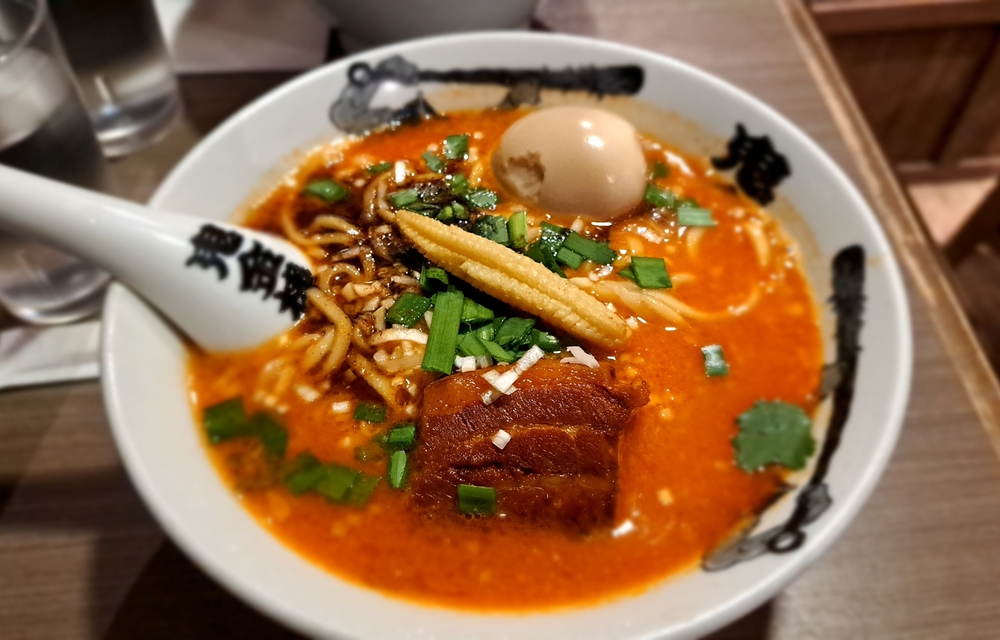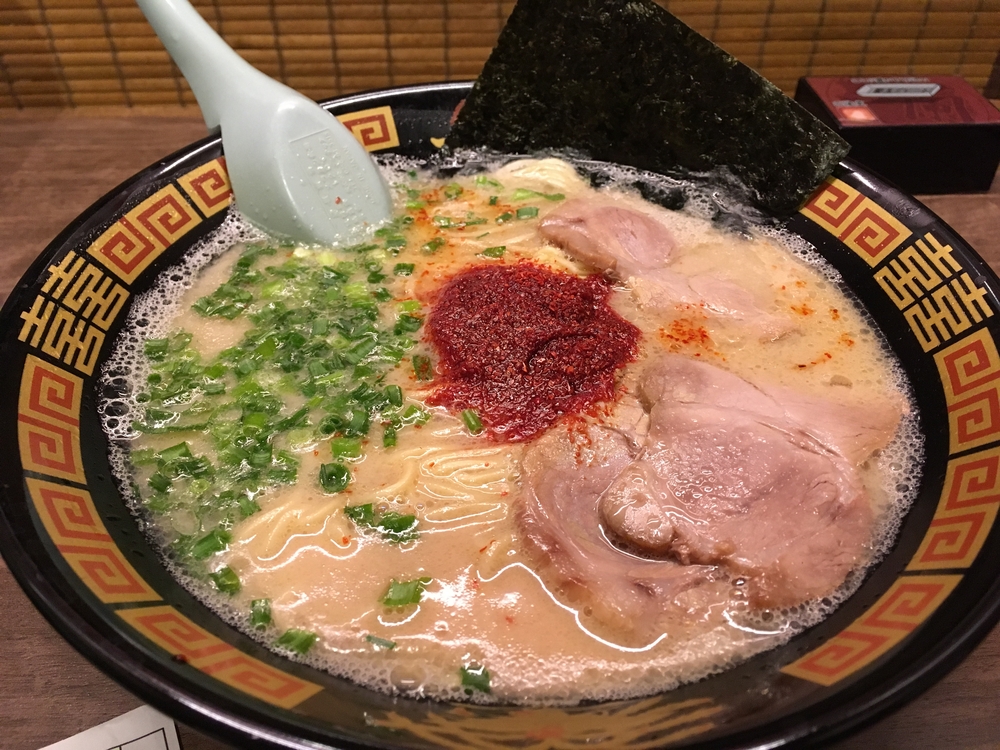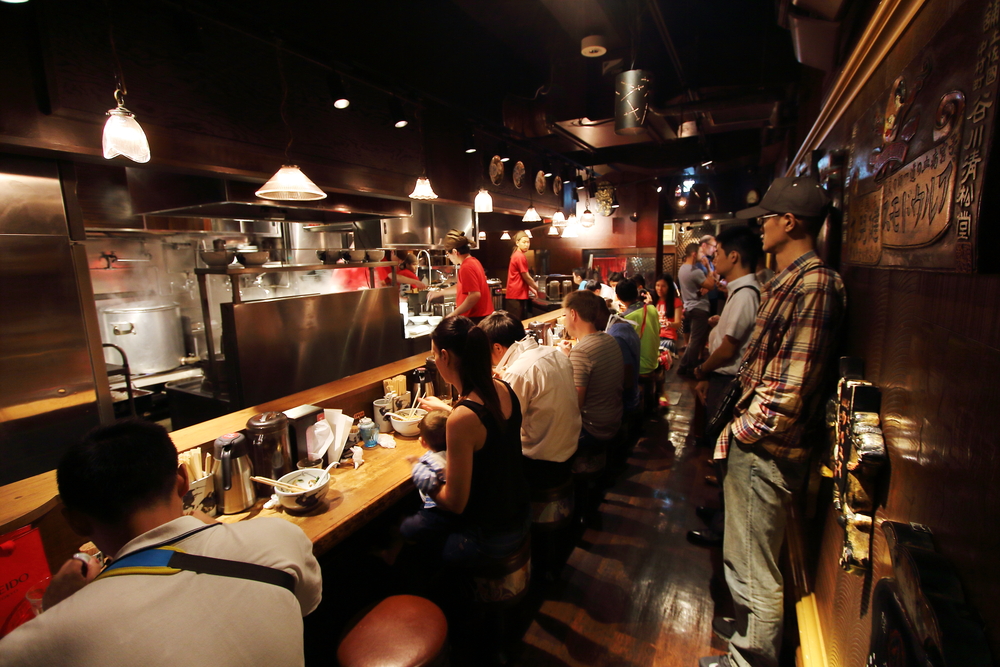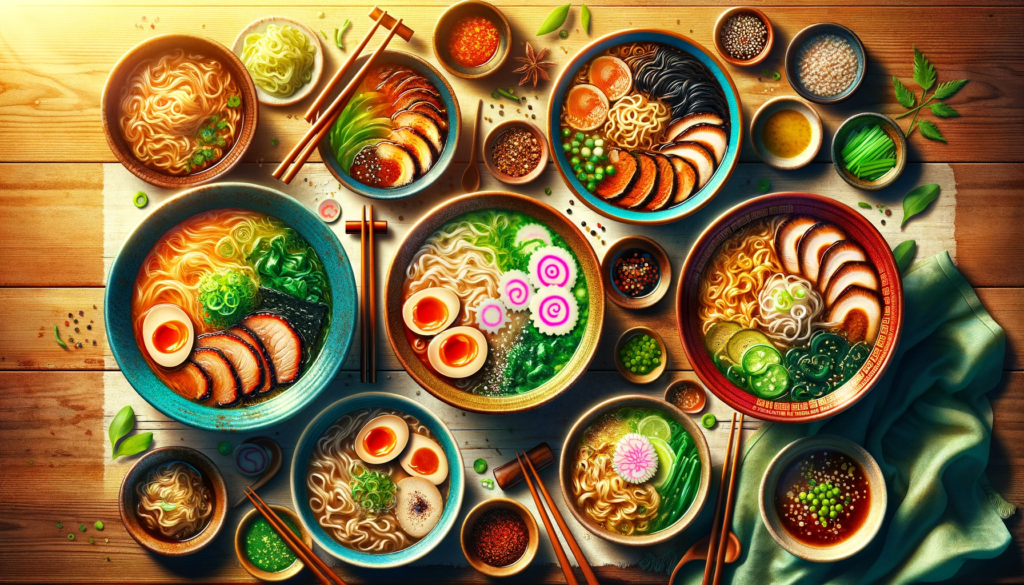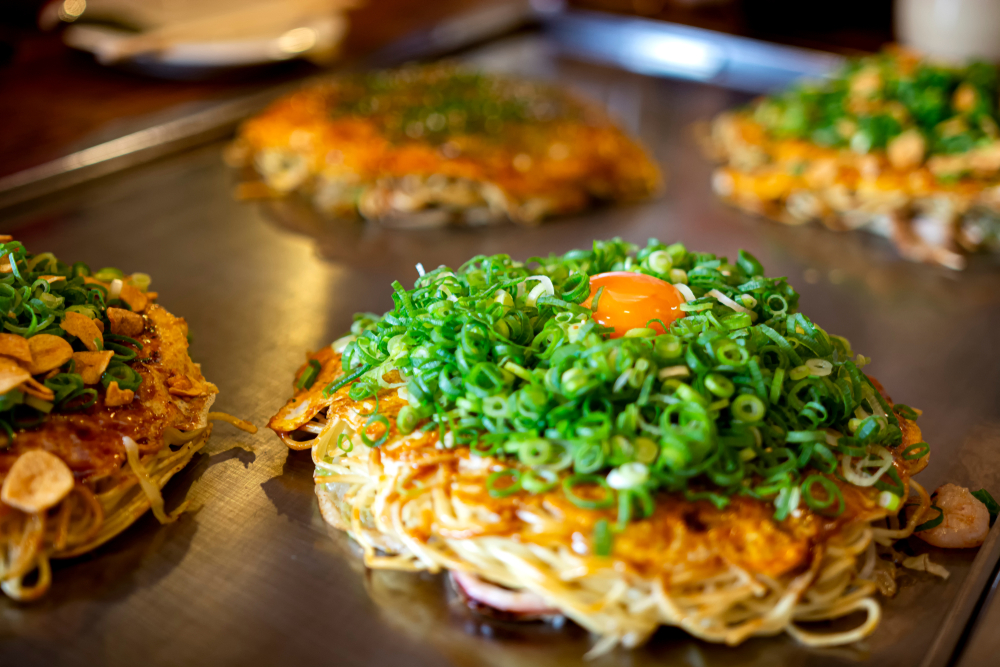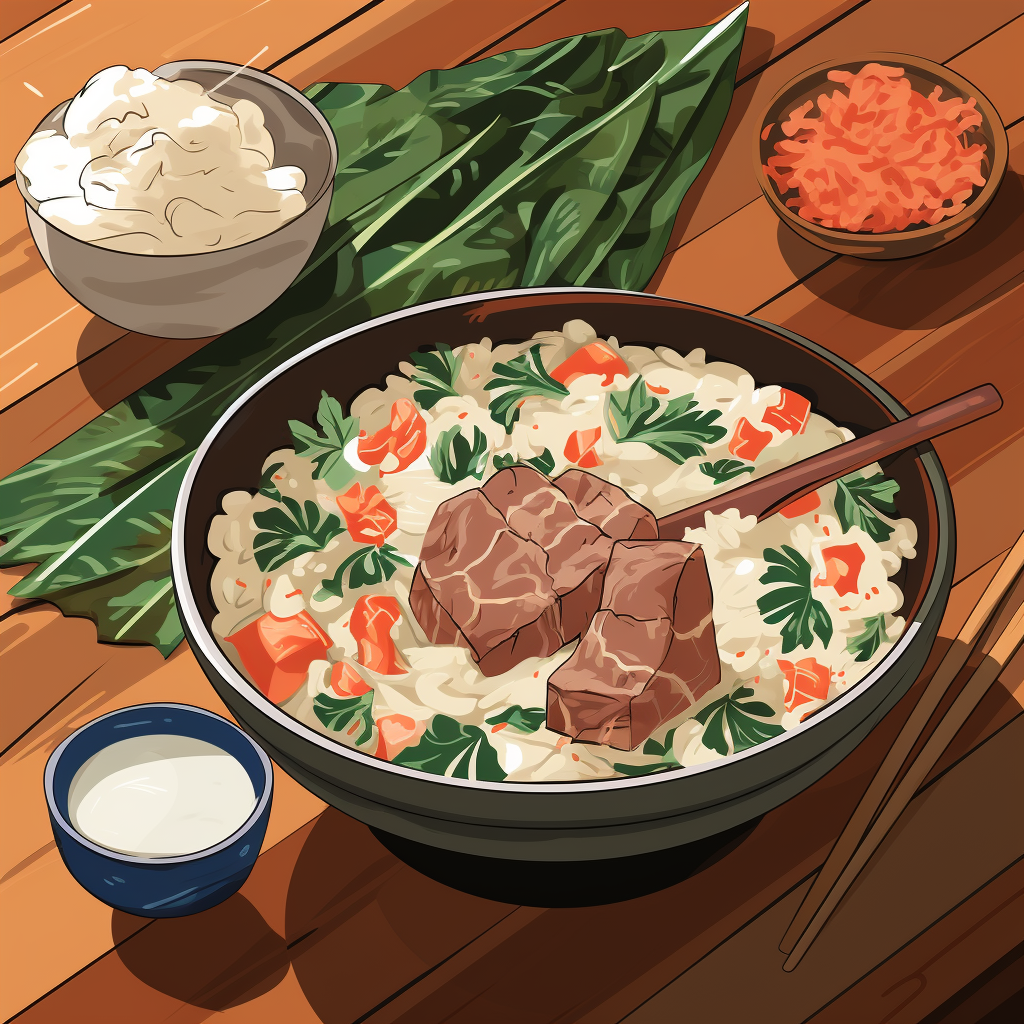Unveiling the Secrets to Authentic Ramen Broth
The Traditional Ingredients for Ramen Broth
The journey to a flavorful ramen begins with its broth, the quintessential soul of the dish. Authentic ramen broth depends heavily on its ingredients, which are carefully selected to create a harmonious blend. High-quality bones, traditionally pork or chicken, are the backbone, providing richness and depth through hours of simmering. To enhance the flavor, aromatics such as onions, garlic, and ginger are added alongside kombu (dried kelp) for its glutamic acid, which imparts umami. Shiitake mushrooms contribute an earthy note, while bonito flakes infuse a subtle smokiness. By understanding and curating these traditional ingredients, a ramen enthusiast can begin crafting a broth that resonates with centuries-old Japanese culinary wisdom.
Decoding Umami: What Makes Ramen Broth So Flavorful?
Umami, the fifth taste, is central to a successful ramen broth and is achieved by balancing several key ingredients. It’s what makes the broth irresistibly savory and complex. The glutamates and nucleotides present in ingredients like kombu, bonito flakes, and soy sauce synergize to heighten this sensory experience. Meats and bones contribute richness and gelatin, thickening the broth and enhancing mouthfeel. Soy sauce and miso paste provide fermentation and salinity, deepening the umami profile. Each element contains natural glutamates, and when simmered over extended periods, they breakdown, intensifying the umami factor, rendering a broth that’s rich, layered, and full of character.
Simplified Process for Rich and Complex Ramen Broth
Crafting an authentic ramen broth can be a time-intensive process, but with a few simplified steps, it’s achievable at home without compromising on richness or complexity. Start with a robust stock by simmering bones and aromatic ingredients for several hours to extract maximum flavor. Strain and combine this with a second stock made from umami-rich elements like mushrooms and seaweed, ensuring to remove any impurities for clarity. Adjust the seasoning with salts or tare (seasoning sauce), and add depth with a dash of mirin or sake. Lastly, consider using pressure cooking techniques to reduce cooking time while maintaining the traditional taste and quality of the ramen broth.
Vegetarian and Vegan Options for Ramen Broth
For those adhering to a plant-based diet, creating a ramen broth that’s both vegetarian and vegan-friendly without losing the essence of umami is fully attainable. Focus on ingredients like vegetable stock, miso paste, and soy milk to build a creamy base. Shiitake mushrooms and kombu are invaluable for imparting a meaty umami kick, while roasted vegetables add depth. Searing tomatoes can introduce a natural sweetness and acidity, balancing the savory components. Flavor enhancers like nutritional yeast and fermented condiments can be added to mimic the complexity typically provided by animal products. With these modifications, a deeply satisfying vegan ramen broth can be crafted without any animal derivatives.
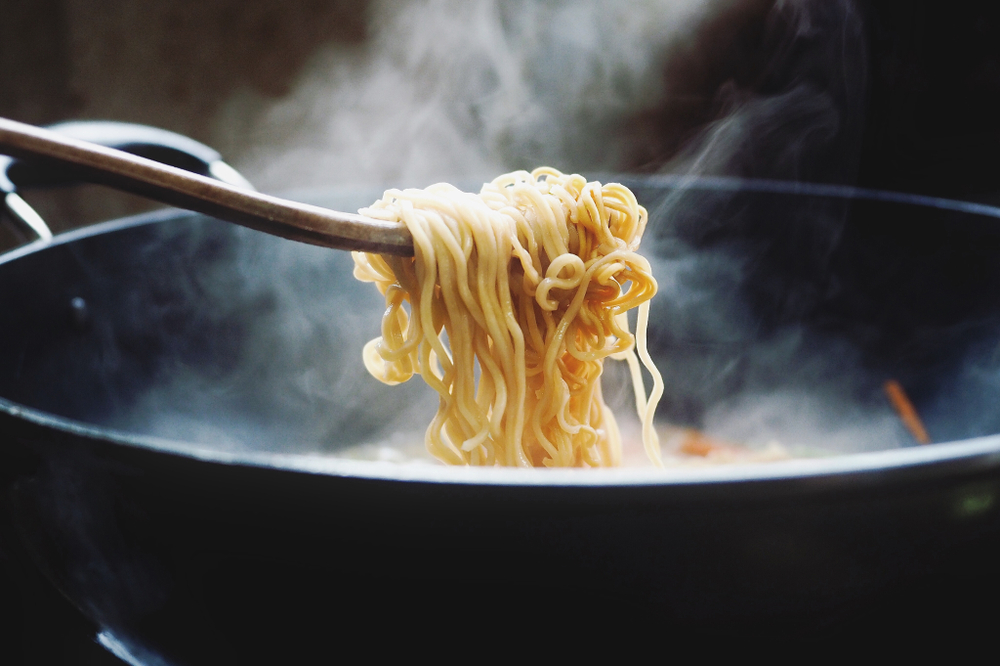
The Art of Perfect Ramen Noodles
Choosing the Right Flour for Ramen Noodles
Noodles are a cornerstone of any ramen dish, and the choice of flour is critical. The ideal flour for ramen is high in protein, usually between 9.5% to 12%, which ensures the development of sufficient gluten. Gluten gives the noodles their chewy, springy texture, key to authentic ramen. Bread flour can serve as a suitable base; however, for those serious about attaining the quintessential noodle, specialized ramen flour with the correct protein content and ash ratio is recommended. Ash content, indicating the mineral content of the flour, affects the noodle’s color and texture. Achieving the golden balance with the right flour leads to the perfect ramen noodle texture.
Kansui: The Secret to Authentic Japanese Noodles
Kansui, a type of alkaline water, is the transformative ingredient in traditional ramen noodle making. It’s what differentiates ramen from other types of noodles. Kansui imparts a unique springy texture and a distinct yellow hue, thanks to its pH level that alters the wheat protein structure. You can either source bottled kansui or create a substitute by baking baking soda to increase its alkalinity. When mixed with the flour, this ingredient not only improves the chewiness but also enhances the noodles’ ability to cling to the broth, harmonizing with every slurp. For home chefs, understanding and using kansui is a game-changer in producing an authentic ramen noodle.
Achieving the Ideal Noodle Thickness and Length
The thickness and length of ramen noodles play a crucial role in the dish’s final taste and texture. Traditionally, ramen noodles are long and elastic, aimed to be slurped with the broth. Thickness varies depending on regional preference – thinner noodles for light broths and thicker for hearty, creamy ones. Precision is key; use a pasta maker or rolling pin to reach the target thickness, usually between 1 to 2 millimeters. Then cut the sheeted dough into strands of an appropriate length, generally around 30 centimeters. Strike the perfect balance between thickness and length to ensure the noodles complement the broth and maintain their chewiness and integrity from the first bite to the last.
Topping Your Ramen: A Guide to Combinations and Flavors
Classic Toppings for Traditional Ramen
Ramen toppings are not only a feast for the eyes but also an integral part of the taste experience. Classic toppings include chashu (braised pork belly), menma (bamboo shoots), and nori (dried seaweed), each providing distinctive tastes and textures. Negi (green onions) offer sharpness and freshness, balancing the savory broth. A perfectly soft-boiled egg, marinated in soy sauce and mirin, is almost ritualistic, its creamy yolk enriching the ramen. Lastly, a sprinkle of sesame seeds or a drizzle of chili oil can be added to enhance the complexity. These classic addons are time-tested and turn a simple bowl of ramen into a symphony of flavors and textures.
How to Prepare and Season Soft-Boiled Ramen Eggs
Soft-boiled ramen eggs, known as ajitsuke tamago, are a staple in ramen cuisine. The trick is to soft-boil eggs so that the whites are set while the yolk remains runny. Start by gently placing eggs into boiling water and cooking for exactly 6 to 7 minutes before transferring to an ice bath to halt cooking. Peel the eggs once cooled. For the marinade, combine soy sauce, mirin, sake, and sugar, adjusting proportions to taste. Submerge the eggs in this mixture for at least a few hours or overnight, ensuring they are fully enveloped. The result is a seasoned egg with a custard-like yolk and a savory exterior that bursts with flavor upon each bite.
Adding a Crunch: Vegetables and Tempura in Ramen
To introduce contrasting textures into your ramen, consider incorporating vegetables and tempura. Crisp vegetables such as bean sprouts, bok choy, or thinly sliced carrots offer a refreshing crunch and brightness, balancing the richness of the broth. Tempura, on the other hand, adds a delightful crispiness. Whether it’s light and airy tempura batter-fried shrimp or vegetables, they bring an extra dimension to the dish. To prevent sogginess, add tempura to the bowl just before serving, maintaining its crunchy texture. These components are not only flavorful but also aesthetically pleasing, adding height and visual interest to your bowl of ramen.
The Role of Meats and Seafoods in Ramen Varieties
Meat and seafood contribute significantly to the diversity and richness of ramen. Chashu, tender slices of pork belly, is a popular choice that provides a melt-in-the-mouth texture. For seafood lovers, options range from tender pieces of octopus to buttery scallops. Ground meats can be utilized in spicy ramen versions, where they are seasoned and cooked to lend heat and savoriness. The freshness and quality of these proteins are paramount, as they can enhance or detract from the final dish. It’s also crucial to pair the protein with the right type of broth – heavier meats with tonkotsu broth and seafood with lighter, clear broths – to create a balanced and satisfying bowl of ramen.
Assembling Your Bowl: Techniques That Make a Difference
Layering Flavors: The Order of Adding Ingredients
Assembling a ramen bowl is akin to building flavors in a symphony, where each element has its place and time. Start with a base of tare in the bowl to ensure even distribution of seasoning. Pour in your hot broth, followed by carefully cooked noodles that have been drained well to prevent watering down the broth. Arrange your selected proteins and toppings aesthetically, considering color and balance. Add aromatic oils or spicy condiments last for an aroma burst and a gleaming look. Attention to the order of addition not only enhances the flavor experience but also maintains the optimal texture of each component, culminating in a perfectly layered ramen bowl.
Presentation Tips for an Instagram-Worthy Ramen Bowl
Ramen is a visual delight, and presentation can transform it into a culinary masterpiece. Opt for a bowl that’s wide and deep enough to showcase the ingredients. Start with the noodles, creating a mound at the center, pour the broth around, and carefully place toppings like chashu, eggs, and greens for visual appeal. Use contrasting colors and shapes to create visual interest – bright yellow corn against green onions, for example. Garnish with a nori sheet or a sprinkle of sesame seeds as a final touch. An Instagram-worthy bowl is about harmony and beauty, ensuring that your ramen looks as tantalizing as it tastes.
Regional Varieties of Ramen: Exploring Different Styles
The Richness of Tonkotsu: Kyushu’s Signature Ramen
Tonkotsu ramen, originating from Kyushu, is celebrated for its rich, pork-based broth. It’s characterized by its opaque, creamy consistency that comes from boiling pork bones for extensive hours, allowing marrow and collagen to emulsify into the liquid. This method creates a broth that’s hearty with a velvety mouthfeel, typically paired with thin, straight noodles that complement its silkiness. Garlic and pork fat are often added for extra depth. Each bowl of Tonkotsu ramen captures the essence of Kyushu’s regional flavors, offering a luxuriously indulgent experience.
Exploring the Soy Sauce-Based Ramen of Tokyo
Tokyo’s take on ramen puts soy sauce at the forefront. This shoyu ramen boasts a clear, brown broth that’s lighter than Tonkotsu but rich in umami flavor. It’s typically made by blending chicken or vegetable stock with a soy sauce-based tare, resulting in a tangy and savory broth. The noodles in Tokyo-style ramen are curly and medium in thickness, offering a satisfying bite. Topped with traditional garnishes like bamboo shoots, seaweed, and a marinated egg, shoyu ramen is a balanced and refined dish representing the elegance of Tokyo’s ramen culture.
The Spicy Miso Ramen of Hokkaido
Hokkaido is known for its spicy miso ramen, a warming dish perfect for the region’s cold climate. Its robust broth combines red miso paste with chicken or pork stock, infusing it with a rich, complex flavor profile. The spiciness comes from a blend of chili oil and other spices, which not only adds heat but also enhances the overall savory notes. This ramen variety is often accompanied by thick, wavy noodles that hold up to the bold broth, along with hearty toppings such as sweetcorn, butter, and ground pork. Hokkaido’s spicy miso ramen is truly an embodiment of local flair and comfort.
Unique Local Ingredients in Regional Ramen Varieties
Regional ramen varieties embrace local ingredients, reflecting each area’s uniqueness and culinary heritage. For instance, the Wakayama region is famous for incorporating seafood, while Kagoshima showcases a lighter broth with a hint of chicken. Seasonal greens, indigenous mushrooms, and locally produced soy sauce or miso can all be found in these regional specialties, creating distinct tastes and authenticity. Exploring local ramen variations is not just a culinary journey, but a deep dive into Japan’s diverse food culture, where each region imparts its signature to the timeless dish of ramen.
Storing and Reheating Leftover Ramen: Best Practices
Keeping Noodles Fresh: Separation Techniques
Leftover ramen noodles can easily become soggy, but proper separation and storage can preserve their texture. When anticipating leftovers, slightly undercook the noodles and rinse them under cold water to halt the cooking process. Store the noodles separately from the broth in an airtight container to avoid them soaking up moisture. This way, they retain their firmness and are ready to absorb the warm broth upon reheating. Employing this technique ensures that your next-day ramen dish retains as much of the original texture and flavor as possible.
How to Store Ramen Broth for Maximum Flavor Retention
Storing ramen broth to maintain its flavor profile is achievable with a few best practices. Allow the broth to cool to room temperature before transferring it to an airtight container. This preserves the integrity of the flavors and prevents contamination. If possible, separate the fat layer, storing it separately to avoid it solidifying throughout the broth. Broth can be refrigerated for a few days or frozen for longer periods. When reheating, bring it back to a simmer – do not boil vigorously as this can alter the flavor and composition of the delicate ingredients.
The Do’s and Don’ts of Reheating Ramen
To perfectly reheat ramen without compromising its quality, there are specific do’s and don’ts to follow. Do reheat the broth separately until simmering, then pour it over the stored noodles which have been warmed separately, either by blanching in hot water or microwaving with a damp paper towel over them. Don’t mix all components together when reheating as the disparate textures and temperatures would result in a muddled mess. Be cautious with toppings; items like eggs and meat should be warmed gently to avoid overcooking. By considering each component’s reheating needs, you can revive the freshness and vitality of leftover ramen.
Pairing Drinks with Ramen: Enhancing the Dining Experience
Selecting Sake for Different Types of Ramen
Pairing sake with ramen can elevate the dining experience, complementing the dish’s complex flavors. Light-bodied sake with higher acidity cuts through the richness of fatty broths like tonkotsu, while full-bodied sake with umami flavors pairs well with miso or soy sauce-heavy ramen. The key is to match the intensity of the sake with the ramen’s profile, ensuring balance. Chilled sake generally pairs best, offering a refreshing contrast to the warm dish. Experimenting with different sake can lead to delightful combinations that highlight both the ramen and the drink.
Non-Alcoholic Beverage Pairings for Family-Friendly Meals
For a family-friendly ramen meal, non-alcoholic beverages can provide delightful pairings. Consider serving flavored sparkling water or iced teas that carry subtle sweetness or citrus notes to cut through the savory broth. Matcha, with its earthy tones, also complements the complexity of ramen, especially those with a soy or miso base. For children, fruit juices diluted with water balance out hearty flavors without overpowering the meal. The aim is to choose beverages that
will refresh the palate between bites, creating a well-rounded dining experience that can be enjoyed by all ages.
FAQs About Homemade Japanese Ramen
What Is the Best Way to Achieve Chewy Ramen Noodles at Home?
The best way to achieve chewy ramen noodles at home is by paying attention to the ingredients and process. High-protein flour is essential, and adding kansui, or alkaline mineral water, gives noodles their characteristic springy texture. The dough should be rested to allow gluten strands to develop. Kneading it well ensures even distribution of kansui, and rolling out the noodles to a uniform thickness ensures even cooking. Following these steps will result in delicious, chewy noodles that rival those from a ramen shop.
Can I Make a Quick Ramen Broth That Still Tastes Authentic?
While traditional ramen broth takes hours to prepare, a quick version can still yield a tasty result. Start with a high-quality store-bought stock and enhance it with aromatics like garlic, ginger, and green onions. Simmer with additional umami boosters such as mushrooms or a dashi packet. For depth of flavor, stir in a spoonful of miso paste or a swirl of soy sauce. A quick ramen broth won’t replicate the layered complexity of a broth simmered for hours, but it’s certainly possible to create a delicious base in a pinch.
How do I Prevent My Ramen Noodles from Getting Soggy?
To prevent ramen noodles from becoming soggy, cook them until just al dente and then rinse them under cold water to stop the cooking process. When reheating, briefly warm the noodles in hot water rather than in the microwave. Serve immediately after combining with broth to keep the texture firm. Properly storing and handling your cooked noodles is key to maintaining their best texture.
Are There Gluten-Free Options for Making Ramen Noodles?
Gluten-free ramen noodles can be made using alternative flours like rice flour or a blend of gluten-free flours designed to mimic wheat’s properties. Xanthan gum may be used as a binding agent to compensate for the lack of gluten. While the texture will differ slightly from traditional ramen noodles, these alternatives offer a similar experience for those with gluten sensitivities or celiac disease.



